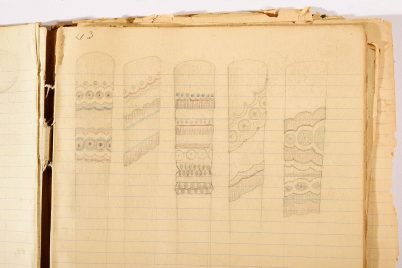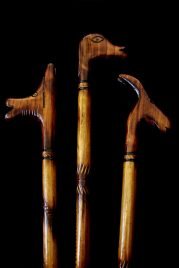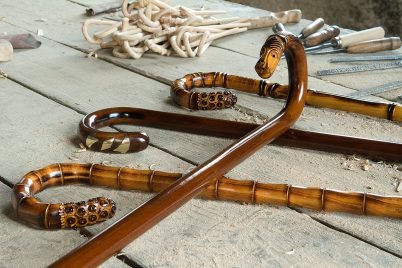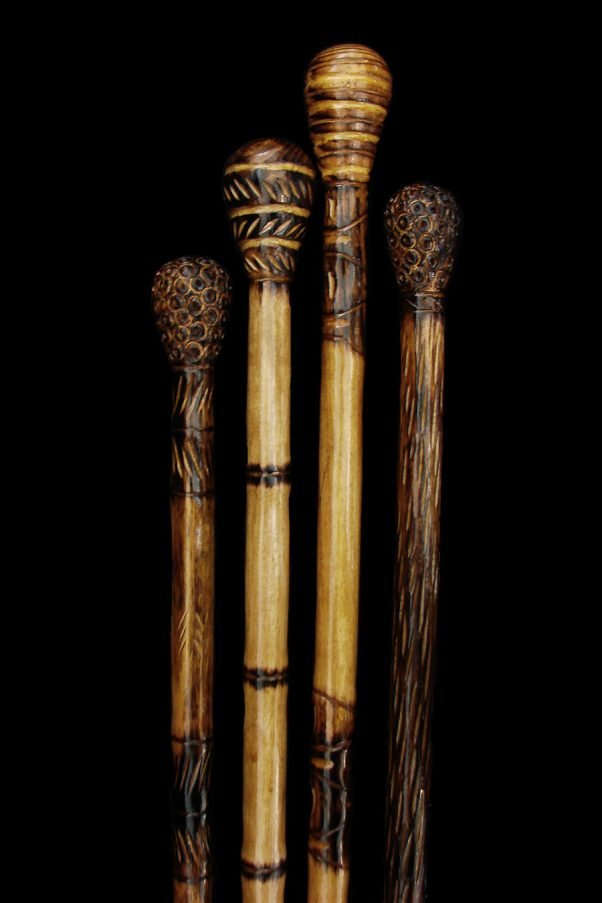Famous for their original folding technique and for their decoration, Gestaçô canes are also well known to university students, since thousands of canes come out annually to the “Doctors” of the burners of the tapes from all over the world. parents.
The collection of umbrella castles, offered to the Municipality of Baião, was owned by Mr. Silvério Pereira Ferraz and was exhibited, for the first time, at the CMB Handicraft Center, in 1983. Silvério Ferraz was, like his father, Belmiro Ferraz, a great craftsman, having made a notable contribution to the dissemination of this craft, which justified the attribution of a medal of cultural merit, by the Municipality of Baião in the 80s. Silvério Ferraz and Belmiro Ferraz have, respectively, in the person of his nephew and grandson, Eduardo Cardoso, a continuator of his art.
THE STORY
The first cane workshops appeared in Gestaçô at the end of the century. XIX.
The great impetus for the trade was Alexandre Pinto Ribeiro, who in 1902 installed his first workshop in the place of Mó, a dream that he had cherished since he had returned from Africa in 1888.
During a visit to an exhibition fair in Madrid, Alexandre Pinto Ribeiro, checked a folding technique different from the one used, and on the cuffs of his shirt he designed the patterns. In Portugal, he had these molds made in cast iron and with this new technological innovation, this man revolutionized the entire production process of walking sticks and umbrella handles.
The change from a cutting to a folding technique not only allowed for a more economic use of wood and made it less fragile, but also brought significant changes to the way of life of large part of the population, as the number of workshops increased as did the orders from the umbrella factories in the country, namely Porto, S. João da Madeira and Braga.
When the walking-cane fell out of use as an accessory to male attire, the workshops of walking-canes started facing difficulties in surviving, closing their doors when the factories started disregarding the umbrella handles made of wood and using plastics and synthetic fibres instead.
Today, the artisans’ survival is achieved through their creativity, showcasing unique pieces that delight collectors, such as the walking-canes with animal heads, the miniatures and the puppets.
PRODUCTION PROCESS
Wood selection and cut
For the simplest and most popular models, European nettle tree is mostly used, though cork, quince and oak wood are also used. Cherry tree, apple tree and chestnut are used for the “prime” models, as they are not only more abundant, but also more adequate for technical experimentation.
The wood is bought by the tree, cut in the sawmill into planks of 1.5 cm thickness and stacked in the workshop to dry in the shade. Once dry, the planks are marked with a ruler and pencil to outline the lengths that will be formed into handles or walking-canes. When making umbrella knobs, lengths of 44 cm were cut. The lengths of 122 cm were reserved for the walking-canes. Nowadays, the wood is cut by a semi-industrial machine, which replaced the Biscaia saw and the wood handsaw.
Preparation of the wood
The wood lengths, which are made into walking-canes, are boiled in old three-legged iron pots on the continuously lit fireplace. The end of the wood (which will be bend) is submerged in boiling water to become adaptable, thus diminishing the risk of a broken cane top.
The moulds in cast iron are also placed directly in the flames, as they must undergo high temperatures to be used in the folding process.
Folding
This stage of production of the cane is undoubtedly the one that arouses the most curiosity due to its originality, which consists of bending the ends of the strips of wood softened in boiling water, with the help of a metal bar (type of kite bow), which is attached to it. overlaps so it doesn't crack during folding. This metal plate is fixed with rings and a screw. This operation is carried out around two red-hot cast iron moulds, with the help of an iron spindle, thus burning the inner cells of the wood, so that the curved shape is maintained (crack).
The walking-cane is removed from this bending bench, keeping one of the moulds on the inside and the metal plate and one of the hoops on the outside. A clamp is attached to tighten the curvature. This step allows for the water to dry and the wood to tighten slightly more, so the walking-cane stays closed for good.
Thinning
After the folding process, the deer is thinned. In order to give the cane its shape, by making the square sections disappear, the craftsman first uses a rasp and a thick file, leaving the cane completely polished. This whole process is carried out on his workbench, with the aid of the lathe, where he squeezes a small piece of wood that he produces himself, to better fit the cane.
Using a chip ax, planer and chisel, the first layer is “thinned” on the longer end of the walking-cane (stem), which confers a circular shape to the wood strip. Nowadays, the rounding of the square section is done by using mechanical tools.
Decoration
The decoration of the walking sticks is rich and varied, obeying more the imagination and creativity of the craftsman than standardized models. However, and despite the fact that no two walking sticks are exactly alike, there is a typology of walking sticks, each of which has a specific production process.
The most characteristic decorative features are the “knots” and “grooves”, shaped with files and an array of gouges with different types of tips, used according to the type of engraving to be created.
A can full of alcohol and a thin copper pipe with a curved tip are used to darken the “knots”. By blowing gently, the curved tip is positioned over the flame of the tin, whilst turning the walking-cane in gentle rotating movements.
Nowadays the “grooves” are darkened by means of a gas blow torch, which replaced the alcohol or petroleum burner. Other designs are obtained by using drills, hot irons and by inlaying the designs with brass.
Finishing
Before varnishing, the craftsmen dip the canes in a liquid called “aguada”, made with water and dark paint powder. This procedure, in addition to working almost like a pore mask, gives the canes darker or lighter tones. The varnishes used in the final stage of finishing are also produced by artisans, and are applied in three coats.
BENGAL MODELS
Java - Bamboo - Malacca
Imitation in cherry wood of materials of oriental origin.
Cana - Junco - Tojo
Imitation in cherry wood of the named materials.
Dog Head - Cobra Head
Imitation of the animals on the upper part of the crosier. Nowadays the artisan uses bone to inlay the eyes in replacement of ivory.
Metal Applications
The artisan uses brass to design figures or letters, which are fixed on the upper tip of the crosier.
Crutch – Stick – Half hand
Models without crosier handle. In the first model, the upper part of the walking-cane ends in a T-shaped handle, separated from the stem by a metal ring. In the last one, the longer part of the T of the crutch is adapted.
Spanish
Twig (not cut out) of the European nettle tree. It is usually decorated with lime designs and gouged over the varnish.



















